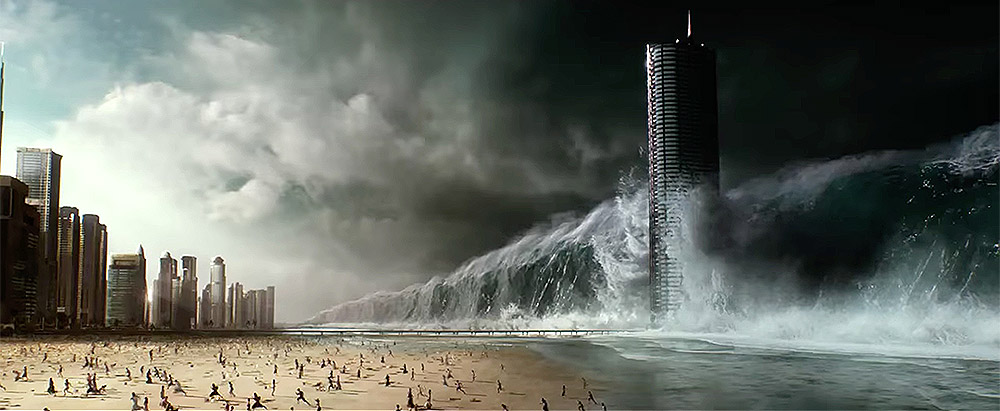'Geostorm' Trailer: Satellite-Controlled Weather Goes Wrong in New Thriller

In a world where satellites control the weather, what happens when that control ceases? Tornadoes and massive tidal waves are just some of the effects, if we're to believe a new teaser trailer for "Geostorm," which comes to theaters in October.
There's a lot happening in only 1 minute and 41 seconds, so let's unpack what we see. The first thing to understand is that this natural disaster, unlike many portrayed in films, is caused by human-made machines, according to the Warner Bros. website.
"After an unprecedented series of natural disasters threatened the planet, the world's leaders came together to create an intricate network of satellites to control the global climate and keep everyone safe," studio representatives said in the film's description. [Space Movies to Watch in 2017]
"But now, something has gone wrong — the system built to protect the Earth is attacking it, and it's a race against the clock to uncover the real threat before a worldwide geostorm wipes out everything … and everyone along with it," the description read.
It's not clear in the trailer what the satellites are controlling, but the effects that occur when they lose that control are devastating. The opening shot of the film gives viewers a glimpse of four tornadoes bearing down on a crowded market as people flee. Coastal areas seem particularly hard hit, as a tidal wave topples buildings like dominoes, sending beach walkers scrambling for higher ground. Later, birds drop from the sky — followed by a passenger jet.
Watching over the events is a haggard, bearded Gerard Butler ("Jake"), who appears to be in a control room of some sort. And he and his colleagues are horrified by what they're seeing. Other stars in the film include Katheryn Winnick ("Olivia") and Ed Harris ("Dekkom.")
We miss Harris' leading-man days when he marshaled mission control into rescuing Apollo 13 ("Apollo 13," 1995), or rode to space as Mercury astronaut John Glenn ("The Right Stuff," 1983). While those films also showed people grappling against the elements, at least the scenarios were based on real science. But, hey, the end of the world is always riveting to watch. Especially if you use explosions.
Get the Space.com Newsletter
Breaking space news, the latest updates on rocket launches, skywatching events and more!
There are some glimpses of space tech in "Geostorm," which takes place at an undefined time in the future. Oddly, it appears the newest space station uses an updated version of the space shuttle to ferry supplies and astronauts back and forth. (Don't tell SpaceX — its Dragon spacecraft's trips to the space station are pivotal in its plans to demonstrate that the craft is awesome enough to send people around the moon or to Mars.)
More intriguingly, we see shots of a space platform firing canisters into a hurricane and (appearing to) start to dissolve the massive storm. It could be a process similar to cloud seeding, a real strategy scientists have considered for engineering Earth's weather and climate — but how useful it is in affecting rainfall is still under debate.
"Geostorm," which is not yet rated, will hit theaters on Oct. 20.
Follow Elizabeth Howell @howellspace, or Space.com @Spacedotcom. We're also on Facebook and Google+. Original article on Space.com.
Join our Space Forums to keep talking space on the latest missions, night sky and more! And if you have a news tip, correction or comment, let us know at: community@space.com.

Elizabeth Howell (she/her), Ph.D., was a staff writer in the spaceflight channel between 2022 and 2024 specializing in Canadian space news. She was contributing writer for Space.com for 10 years from 2012 to 2024. Elizabeth's reporting includes multiple exclusives with the White House, leading world coverage about a lost-and-found space tomato on the International Space Station, witnessing five human spaceflight launches on two continents, flying parabolic, working inside a spacesuit, and participating in a simulated Mars mission. Her latest book, "Why Am I Taller?" (ECW Press, 2022) is co-written with astronaut Dave Williams.









